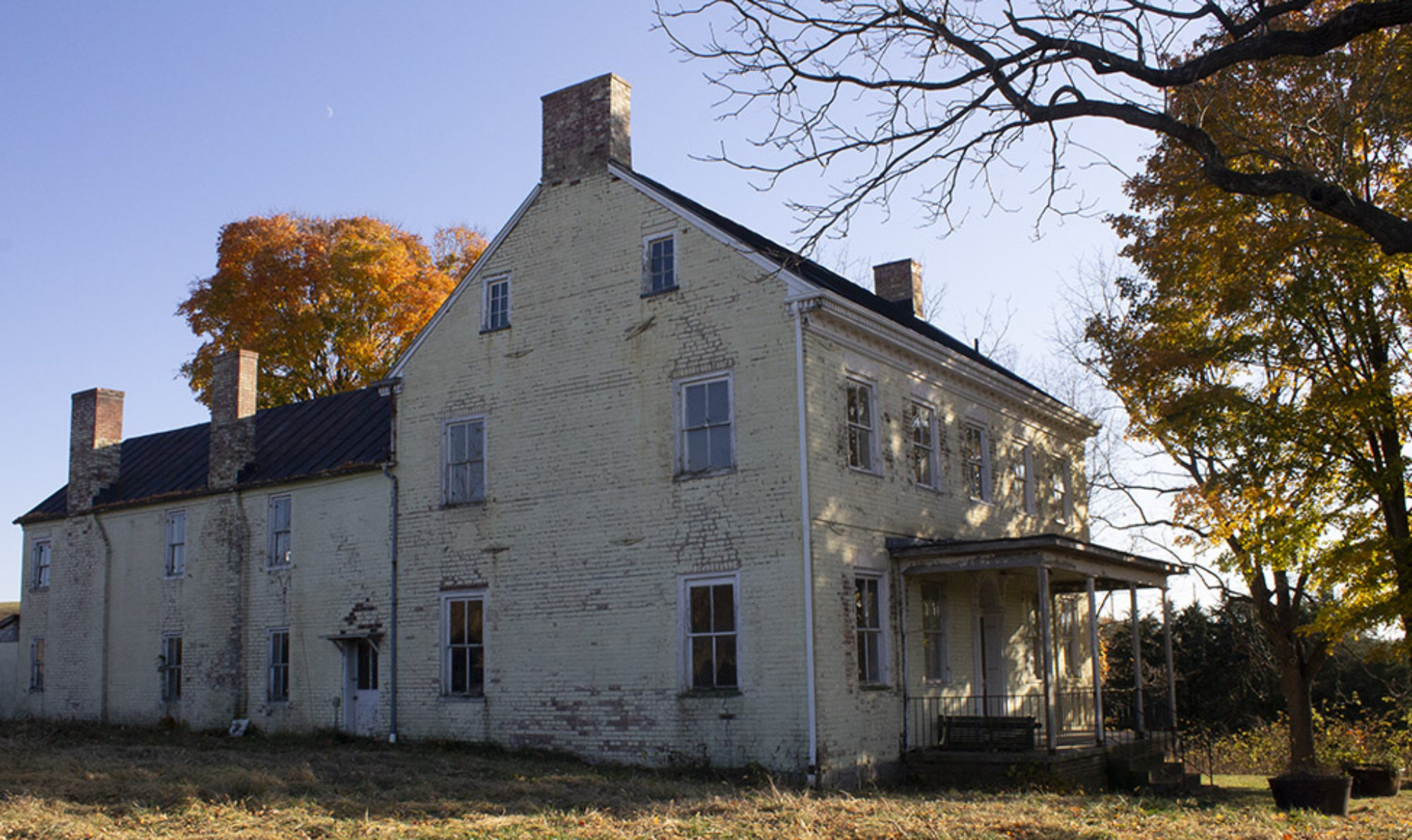Madeleine Hesler, Ryan Ritter, and Ashton White
Squire was an enslaved man at the Lincoln Homestead who in 1841 was charged with burning a barn “of the value of one Thousand Dollars” belonging to Abraham Lincoln (Lincoln Public Claim). He had been acquired by Jacob Lincoln, Jr., son of the original builder of the Homestead, through his mother-in-law Dorcas Robinson in 1811 (Wayland, 253). As with many enslaved people in the antebellum South, there is, unfortunately, little information about Squire in the historical records. However, his story may be pieced together through the few available documents and recorded testimony.

Squire was tried and convicted by a five-judge court of oyer and terminer, a type of court established specifically to handle slave crime, and was originally sentenced to be hanged on October 29, 1841.However, an act of “clemency” from the court ordered that he be brought to an unidentified penitentiary for transportation before he was likely sold for $280. At the time of his transfer to the penitentiary, Squire was 50 years old. What happened after his transfer is a matter of speculation, though it is most likely that he continued his servitude elsewhere.

Virginia had one of the most “repressive systems of criminal law regarding slaves” (Flanigan, 546). Court magistrates were often composed almost entirely of slave owners, and lack of evidence against an accused defendant often did not halt the issuing of a guilty verdict (Campbell 71-85). As opposed to the biennial circuit court sessions where white defendants were tried, courts of oyer and terminer met for only five to ten days after an investigation was filed and, according to historian James Campbell, largely existed “for the sole purpose of trying and sentencing […] specific slave[s].”
Though Squire was likely never executed, his original sentencing to be hanged was not an uncommon punishment for enslaved Virginians. For courts of oyer and terminer, capital punishment was often preferred. It served as a mechanism for white slave owners to assert power and intimidate those they enslaved. To instill further fear, slave owners would oftentimes display the heads of executed slaves as a reminder to others of their fate should they choose to rebel (Blackman and McLaughlin, 45). At the time of his sentencing, Squire’s crime was considered particularly egregious. According to Anne Willis, slaveholders feared arson the most as it was “impossible to guard against, and it endangered their own lives and property” (Willis, 37).
Slave rebellion is often associated with dramatic acts such as Squire’s alleged act of arson, with less attention paid to quieter forms of resistance (Scully). Yet practicing religion, fostering community and family connections, and staying true to oneself allowed enslaved individuals to experience a taste of freedom, agency, and hope even while under the oppression of their enslavers. Quieter forms of rebellion could contribute to the stirrings of (and success of) dramatic slave rebellions.
Squire’s case is an interesting, yet not uncommon one in the historical record. Due to the lack of information and documentation of Squire outside of his court case, we cannot determine what occurred to him after the trial. Squire represents one of many enslaved individuals who went through an unjust court system. His act of rebellion was one among many varieties. Rebellion could look different based on the motives and hopes of each individual living under a system of oppression.
Works Cited
Blackman, Paul H. and McLaughlin, Vance. “Mass Legal Executions in America up to 1865.” Crime, Histoire, & Sociétés 8, no. 2 (2004).
Campbell, James. “‘The Victim of Prejudice and Hasty Consideration’: The Slave Trial System in Richmond, Virginia, 1830-61.” Slavery & Abolition 26, no. 1 (2005).
Flanigan, Daniel J. “Criminal Procedure in Slave Trials in the Antebellum South.” The Journal of Southern History 40, no. 4 (1974).
Lincoln, Jacob: Public Claim, 1841-10-09. Virginia Untold: The African American Narrative Digital Collection, Library of Virginia, Richmond, VA.
Scully, Randolph Ferguson. “‘I Come Here Before You Did and I Shall Not Go Away’: Race, Gender, and Evangelical Community on the Eve of the Nat Turner Rebellion.” Journal of the Early Republic 27, no. 4 (2007).
Wayland, John W. The Lincolns in Virginia. Staunton, VA: The McClure Printing Company, 1946.
Willis, Anne Romberg, “The Master’s Mercy: Slave Prosecutions and Punishments in York County, Virginia, 1700-1780.” Master’s thesis. College of William & Mary, 1995.
